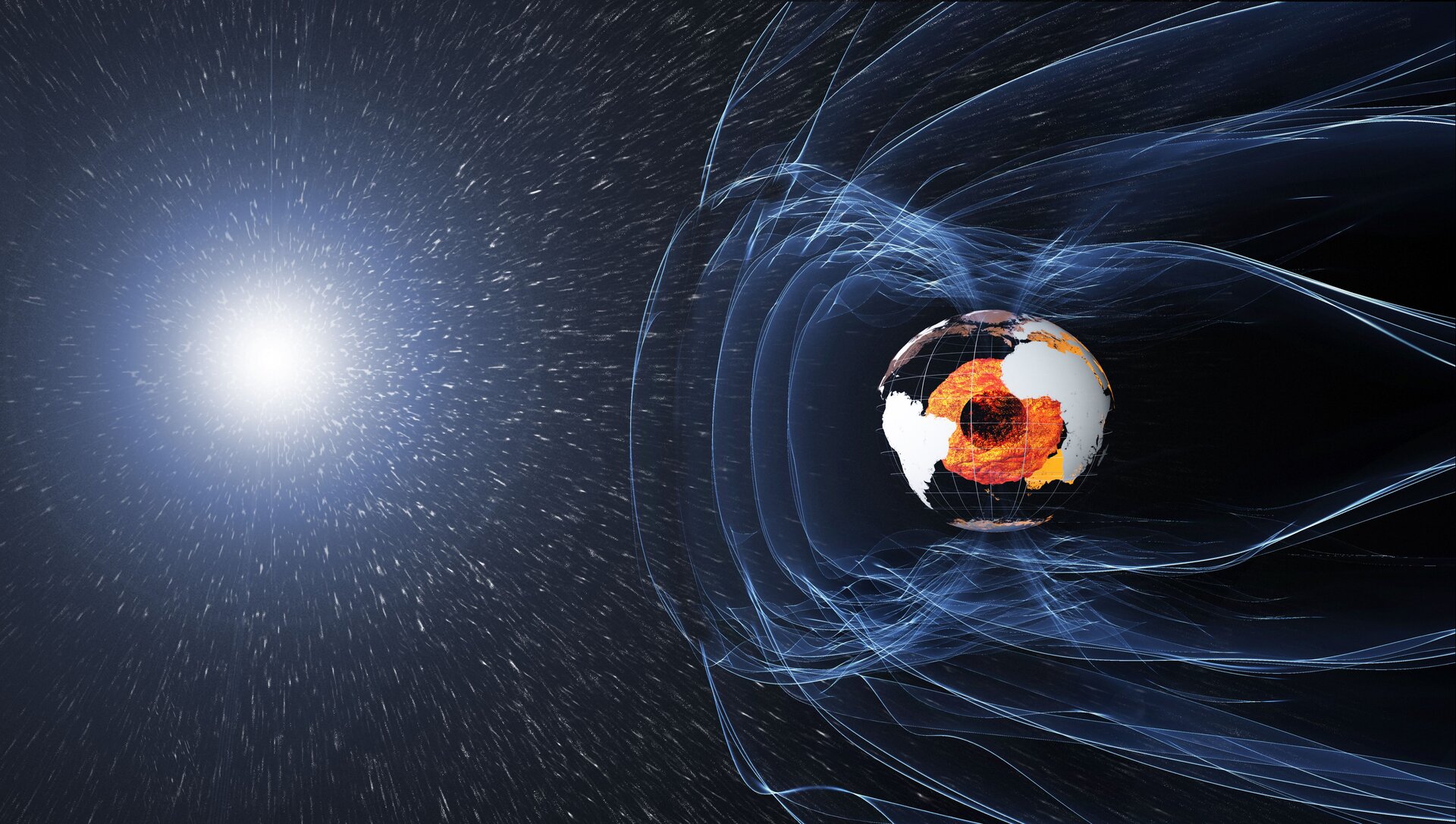Listen to the terrifying rumble of Earth's magnetic field being assaulted by a solar storm
A data conversion project represents otherwise silent interactions between the Earth and sun.
If you're seeking something unsettling from space this October, an audio track of converted data released by the European Space Agency (ESA) provides a disturbing sonic representation of the Earth's magnetic field under attack.
Earth's magnetic field is generated by superheated, swirling liquid iron in the planet's core and, crucially, keeps life on the surface safe from a barrage of cosmic radiation and charged particles. We can sometimes see these interactions as green-blue aurora near the poles, but it's not usually something that can be heard.
However, a team from the Technical University of Denmark has made the invisible audible by gathering data from a trio of ESA satellites launched in 2013 to measure the Earth's magnetic signals and converting it to sound. The result is a somewhat unnerving representation of a rumbling magnetic field and a clash with particles from a solar flare.
Related: Astronaut spots bright aurora storm from the International Space Station (photos)

The audio is available online, but it was designed to be experienced via a sound system consisting of over 30 loudspeakers dug into the ground at the Solbjerg Square in Copenhagen, Denmark.
"The team used data from ESA's Swarm satellites, as well as other sources, and used these magnetic signals to manipulate and control a sonic representation of the core field," musician and project supporter Klaus Nielsen, said in a statement.
"The rumbling of Earth's magnetic field is accompanied by a representation of a geomagnetic storm that resulted from a solar flare on Nov. 3, 2011, and indeed it sounds pretty scary," Nielsen said.
Get the Space.com Newsletter
Breaking space news, the latest updates on rocket launches, skywatching events and more!
The magnetic signals used include those passing through mantle, crust and oceans, as well as from the ionosphere and magnetosphere, so sounds suggestive of an earthquake are somewhat fitting.
Visitors to the square can listen to the data sonification project until Oct. 30.
Follow us on Twitter @Spacedotcom and on Facebook.
Join our Space Forums to keep talking space on the latest missions, night sky and more! And if you have a news tip, correction or comment, let us know at: community@space.com.

Andrew is a freelance space journalist with a focus on reporting on China's rapidly growing space sector. He began writing for Space.com in 2019 and writes for SpaceNews, IEEE Spectrum, National Geographic, Sky & Telescope, New Scientist and others. Andrew first caught the space bug when, as a youngster, he saw Voyager images of other worlds in our solar system for the first time. Away from space, Andrew enjoys trail running in the forests of Finland. You can follow him on Twitter @AJ_FI.









